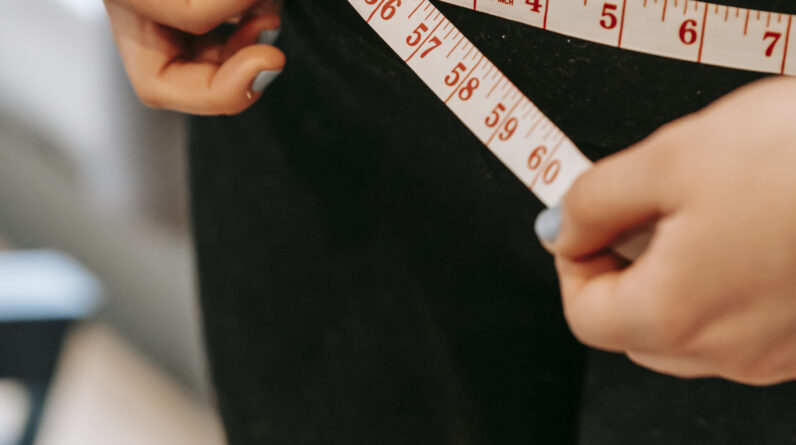
If you’ve ever been curious about the weight of a kayak, you’re not alone. Knowing the weight of a kayak is essential for many reasons, whether you’re planning to transport it, store it, or simply want to understand its overall characteristics. In this article, we will explore the various factors that contribute to a kayak’s weight and provide you with practical tips on how to determine the weight of a kayak. So, if you’re ready to embark on this informative journey, let’s dive right in!
Factors Affecting Kayak Weight
When it comes to kayaks, weight is an important consideration for many paddlers. Whether you’re a beginner looking for a lightweight option or an experienced kayaker in need of a sturdy vessel, understanding the factors that contribute to a kayak’s weight can help you make an informed decision. Here are some key factors that can affect the weight of a kayak:
Materials Used
One of the primary factors that determine the weight of a kayak is the materials used in its construction. Different materials have different properties, which can impact both the weight and the performance of the kayak. Here are some common materials used in kayak construction:
Plastic: Plastic kayaks, often made from polyethylene, tend to be the heaviest option. However, they are also highly durable and resistant to impact, making them a popular choice for recreational kayaking and beginners.
Composite: Composite kayaks are made from a combination of materials, such as fiberglass, Kevlar, or carbon fiber. These kayaks are typically lighter than plastic ones and offer better performance, but they can be more expensive.
Inflatable: Inflatable kayaks are made from durable and puncture-resistant materials like PVC or Hypalon. They are extremely lightweight and portable, making them a great option for backpacking or those with limited storage space.
Wooden: Wooden kayaks are often handcrafted and can be customized to fit individual needs. While they are heavier than some other materials, wooden kayaks offer a unique aesthetic and can provide excellent performance on the water.
Kayak Type
The type of kayak you choose will also impact its weight. Different kayak types are designed for specific purposes, and their construction reflects those requirements. Here are some common types of kayaks:
Sit-on-Top: Sit-on-top kayaks are known for their stability and ease of use. They are a popular choice for recreational paddling, fishing, and warm-weather conditions. Sit-on-tops tend to be wider and heavier than other kayak types.
Sit-inside: Sit-inside kayaks offer more protection from the elements and are suitable for various water conditions. They are often lighter and sleeker than sit-on-tops, making them faster and more maneuverable.
Tandem: Tandem kayaks are designed to accommodate two paddlers. While they offer additional carrying capacity, they tend to be longer and heavier than single-person kayaks.
Fishing: Fishing kayaks are specifically designed with features like rod holders, storage compartments, and stable hulls. These additional features may add weight to the kayak.
Touring: Touring kayaks are designed for longer trips and multi-day adventures. They are typically longer and narrower than recreational kayaks, making them more efficient in the water.
White Water: White water kayaks are built to withstand the rigors of fast-moving, turbulent water. They often have reinforced hulls and additional features for maneuverability, which can make them heavier than other kayaks.
Surf Ski: Surf skis are specifically designed for racing or surfing on ocean waves. They are long, narrow, and lightweight, allowing for fast and agile performance.
Kayak Size
The size of a kayak is an important factor in determining its weight. Larger kayaks tend to be heavier, as they require more material for construction. Here are some dimensions to consider:
Length: Longer kayaks offer better tracking and speed, but they can be heavier and harder to maneuver. Shorter kayaks are typically lighter and more maneuverable.
Width: Wider kayaks provide more stability, but they can also add weight. Narrower kayaks are lighter but may sacrifice stability.
Depth: Deeper kayaks offer more storage space and carrying capacity. However, they may be heavier and more susceptible to wind.
Additional Accessories
The inclusion of additional accessories can also contribute to the overall weight of a kayak. While these accessories can enhance your paddling experience, keep in mind that they may add extra weight:
Seats: Some kayaks come with padded seats for added comfort. While these seats can improve your comfort on long trips, they may increase the kayak’s weight.
Paddles: Different materials are used in paddle construction, and the weight can vary accordingly. Lightweight carbon fiber paddles are popular among experienced paddlers due to their reduced weight.
Hatches: Hatches provide storage compartments within the kayak, allowing you to carry gear and essentials. While they are convenient, they can add weight to the kayak.
Rudders: Some kayaks employ rudders or skegs to improve tracking and maneuverability. While these features can enhance your kayaking experience, they may contribute to the overall weight.
Footrests: Adjustable footrests are common in kayaks to provide proper leg support while paddling. While they offer added comfort and control, they can increase the weight of the kayak.
Manufacturing Process
The manufacturing process used to construct a kayak can affect its weight and performance. Different processes have varying levels of precision, strength, and weight. Here are some common manufacturing processes for kayaks:
Rotomolding: Rotomolded kayaks are made by heating and molding plastic in a rotational mold. This process creates a durable and impact-resistant kayak, but the additional plastic makes them heavier.
Thermoforming: Thermoformed kayaks are made by heating and molding a sheet of plastic over a mold. This process yields a lighter kayak with good durability and strength.
Hand-laid Fiberglass: Hand-laid fiberglass kayaks are built by layering fiberglass sheets over a mold and applying resin. This process can produce lightweight, high-performance kayaks at varying weights.
Carbon Fiber: Carbon fiber kayaks are constructed using layers of carbon fiber cloth and epoxy resin. These kayaks are incredibly lightweight, stiff, and offer excellent performance, but they come with a higher price tag.
Woodworking: Wooden kayaks are often handcrafted using a variety of techniques and materials like plywood, cedar strips, or timber. While wooden kayaks can be heavier than other options, they offer a unique look and excellent performance.
Now that we’ve explored the different factors affecting kayak weight, let’s dive into the methods you can use to determine the weight of a kayak.

Determining the Weight of a Kayak
When you’re looking to determine the weight of a kayak, there are several methods you can use. Each method has its advantages, and you can choose the one that suits you best. Here are some ways to determine the weight of a kayak:
Consult Manufacturer’s Specifications
The simplest and most accurate way to find the weight of a kayak is to consult the manufacturer’s specifications. Most kayak manufacturers provide detailed information about the weight of their products, including the weight without accessories or any additional features. This information can usually be found on the manufacturer’s website or in the product manual.
Weigh the Kayak on a Scale
If you have access to a suitable scale, you can weigh the kayak yourself. Find a flat surface and make sure the kayak is balanced evenly. Place the scale under the kayak and lift it carefully until the weight is registered on the scale. This method allows you to determine the exact weight of your kayak, including any additional accessories or gear that may be attached.
Compare with Similar Kayaks
If you don’t have access to a scale or manufacturer’s specifications, you can compare the weight of the kayak you’re interested in with similar models. Many online retailers and kayak enthusiasts provide detailed information and reviews about different kayak models. By comparing the weights of different kayaks with similar dimensions and features, you can get a rough idea of the weight range you can expect.
Use Online Resources
There are various online resources available that provide comprehensive databases or forums where kayak owners and enthusiasts discuss different kayak models and their weights. These resources can be a valuable tool in determining the weight of a specific kayak model or comparing weights across different brands and types.
Ask Experts or Local Retailers
Lastly, if you’re still unsure about the weight of a kayak, reach out to experts or local retailers. Experienced kayakers or knowledgeable sales associates can provide firsthand information and insights about specific kayak models. They may have personal experience with the kayak you’re interested in and can offer valuable advice based on their knowledge and expertise.
By utilizing these methods, you can accurately determine the weight of a kayak and make an informed decision that aligns with your paddling needs and preferences.
In conclusion, understanding the factors affecting kayak weight is crucial to choosing the right kayak for your needs. Materials used, kayak type, size, additional accessories, and manufacturing process all contribute to the overall weight of a kayak. By considering these factors and utilizing the different methods to determine weight, you can confidently select a kayak that suits your paddling style and preferences. Remember to consult manufacturer’s specifications, weigh the kayak on a scale if possible, compare with similar models, use online resources, and seek advice from experts or local retailers. Happy paddling!









